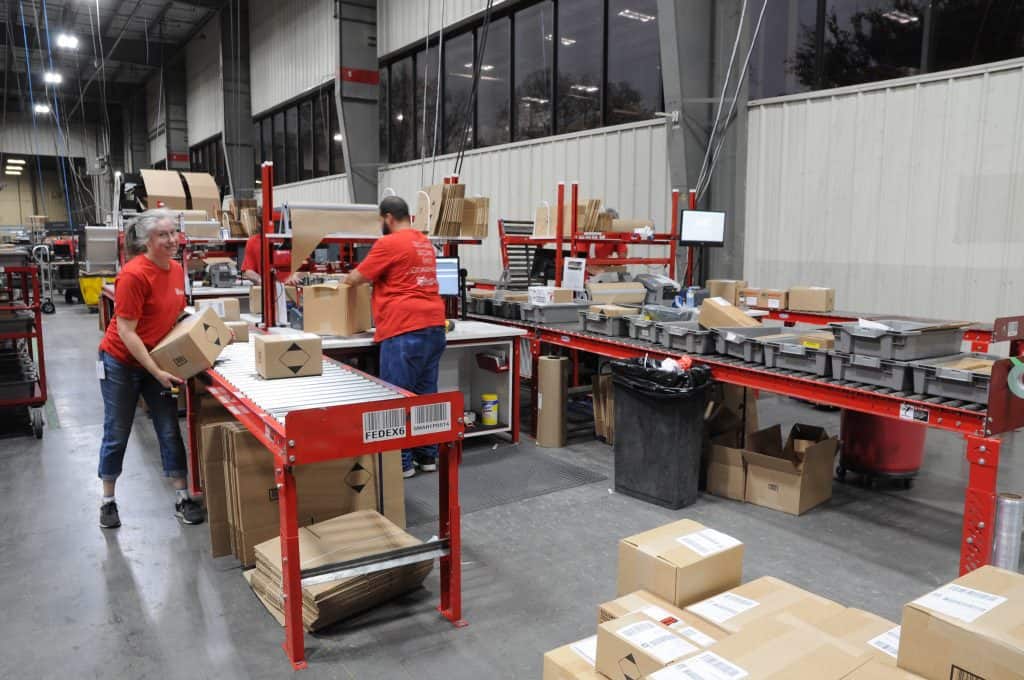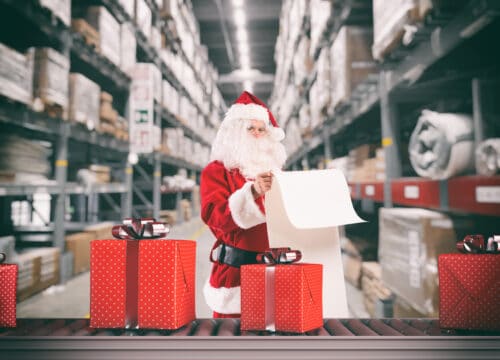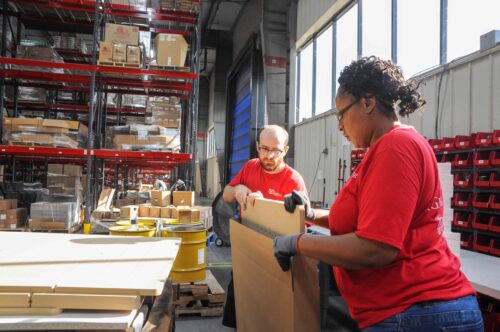ECommerce sales represent almost half of all retail sales growth. In 2018, consumers bought $517.36 billion from online retailers. Despite this success, the average eCommerce site has a conversion rate below 5%. The bar for entry into the eCommerce marketplace is low. Therefore, the proliferation of online retail has outpaced growth in consumer spending online. Now more than ever there is a need to increase ecommerce conversion rates to stay ahead.
In addition, consumers sometimes treat online shopping sites as places to gather information rather than buy. Even while they’re in a bricks-and-mortar store, shoppers often compare prices online before making a purchase. In fact, 72% of shoppers do research online before shopping in-store. Nearly two-thirds report checking prices on their phone while in the store.
All that online browsing is a sales opportunity for your eCommerce business. Improving your conversion rate will help you take advantage of these visitors and turn browsers into buyers. These 20 ecommerce conversion tips will help you with conversion rate optimization.
What is an Ecommerce Conversion Rate?
The conversion rate for an eCommerce site is the percentage of visitors who make purchases. Use the formula below to calculate your conversion rate.
If you have 20 sales from 1,000 site visitors:
20 ÷ 1,000 = 2% conversion rate
The average conversion rate across the entire eCommerce landscape is between 1% and 4%. If you can increase your ecommerce conversion rate even by 1% or 2%, you might double your sales.
How to increase your ecommerce conversion rate
You can take steps before, during, and after a shopper visits your site to increase conversions. Here are 20 data-backed, actionable tips that can help you improve your conversion rate and impact your bottom line.
Start Before Shoppers Get to Your Site
You don’t have to wait for a shopper to land on your site to start taking steps to boost your conversion rate. Here are two tips to bring prime shoppers to buy even before they click on your product pages.
1. Make advertising and website copy uniform
The Rule of 7 is a piece of marketing philosophy that predates the internet. It states that a consumer needs to see your message at least seven times before your advertising is effective. In today’s overcrowded digital landscape, you might need to reach people many more times than this using different types of paid advertising.
To follow the Rule of 7, you need consistent messaging across your advertising, social channels, and website. Imagine a visitor who clicks on an ad that highlights lightweight sneakers. If he lands on a webpage with copy promoting the color range of your sneaker line, you’re less likely to get a sale. Keep hitting consumers with the same sales message and your conversion rate is bound to go up.
2. Offer coupon codes
When someone visits your website with a coupon in hand, they’re more likely to be a shopper than a browser. Put your coupons on sites like Woot! or Groupon. Coupons and discount codes can also deliver useful sales analytics. BigCommerce published a good primer on how to grow your sales through coupons.
Improve Your On-Site Conversion Rate
When a visitor is on your eCommerce site, you have the most leverage to take steps to get them to buy from you. Starting with your landing page, you can increase the conversion rate in your eCommerce store with everything from technical zing to marketing zip. Here are 12 more ways to turn casual visitors into loyal customers.
3. Decrease loading time
You probably know that load time is the time it takes for your website to load in a browser. What you may not know is how crucial every second of that load time is to your conversion rate. One study found that when load time was increased by two seconds, the site bounce rate more than doubled. Analysis by Walmart has found that conversion rates drop sharply with load times greater than one second. People spend more time on pages that load more quickly. In addition, shoppers are less likely to return to an eCommerce site if pages take too long to load.
To improve loading time, you can take concrete steps to optimize your eCommerce site. Test every page on computer and mobile. Make sure your images and files aren’t too large and that your webhost can offer the speed you need. Load time is so important, it’s worth getting expert help if you don’t have the technical expertise to fix this yourself. You’ll get back the money you spend many times over if you can bump up your conversion rate.
4. Offer free return shipping
The one big advantage that bricks-and-mortar retail has over eCommerce is the touch factor. When your customers order online, they take the chance that what they receive won’t meet their expectations. The best way to overcome this resistance is to have a great return policy. Free return shipping gives customers the confidence to take a chance on a purchase they’re not sure off. Make sure your policy is clearly stated and easy to find. Put a link to your return policy on your front page and in your checkout. Keep the language of your returns policy simple and friendly.

5. Offer free shipping
A 2016 study found that free shipping was the most important incentive to buy online for 90% of online shoppers. It’s hard to underestimate the importance of free shipping. If you are able to offer free shipping, make sure that you state this prominently on all your sales pages. After load time, free shipping may be the next most important tool you have to increase your conversion rate and gain sales.
It’s worth changing your order fulfillment operations to make free shipping economically feasible. Partnering with a 3PL that has centrally-located fulfillment centers can lower your costs because your orders will ship through fewer zones. As an added bonus, your orders will arrive more quickly. Fast and consistently reliable shipping with an ecommerce fulfillment company is a factor that can drive up conversion rates.
6. Shoot small
Before you sell someone a $400 leather bag, you might sell them a $60 billfold. That first sale gives the buyer a positive experience with your brand. Once they experience your quality and your efficient fulfillment operations, they’re more likely to shop again. Studies have shown that small conversions are more likely to lead to big sales down the road.
7. Use quality images
This seems like a no-brainer, but it must be said: Use good photographs. This might mean hiring a professional product photographer to create the images you need. Some eCommerce sellers set up a small photo studio in their workspace. That allows you to quickly take high-quality photos when you have a new product to list. If you’re a reseller, make sure you get photos that are at least 640 x 640 pixels in size.
8. Offer discounts and sales
Sales promotions and discount offers are a great way to get visitors to your eCommerce site to become buyers. Limited time promotions add a sense of urgency to the purchase. That will increase your conversion rate. You can discount older stock to make room for new items. Another strategy is to increase your prices, and then offer frequent discounts. That way, the customer feels like they are getting a deal.
9. Promote benefits, not features
When you write promotional copy, it’s important to step out of the role of the maker or owner. Forget the things that matter to you about your product. Focus instead on why your customer will appreciate the purchase. Highlight benefits, not features. Don’t talk about where you source the leather for your high-end bags or the meticulous care that goes into their construction. Instead, focus on the fact that this is a leather bag that will last a lifetime and carry almost anything. A creative blog that communicates your brand is a great way to highlight the benefits of your products.
10. Harness the power of social media
A robust social media presence allows you to go way beyond the Rule of 7. You can reach your customers on an almost daily basis. It also allows you to harness the power of customer reviews. Pro tip: Feed social media raves from your customers onto your product pages. Before they make a purchase, 95% of customers read reviews online. This valuable form of social proof is even more important for ecommerce conversions than retail conversions.
11. Optimize your FAQ page
Once again, put yourself in your customer’s place. Use customer feedback and your own customer support data to shape your FAQs. Answer the questions that are most likely to keep someone from buying. Address anxieties about returns and shipping on your FAQ page. Include links to outside resources, where appropriate, to provide additional information.
12. Allow guest shopping
One way to lower your conversion rate is to force shoppers to create an account before they can buy from you. Your first-time buyer hasn’t committed to your brand yet. She might not know if she’ll shop with you again. Plus, she already has too many passwords to remember. When you allow guest checkout, you’ll increase your sales. Once your customer becomes a regular shopper on your site, she’ll want to create an account to check out more quickly.
13. Show security to build trust
When someone buys from you online, you’re asking them to trust you with sensitive credit card and contact information. Add a trust badge to show that you take security seriously. A shopper who has faith that the transaction will be secure is one who’s more likely to convert.
14. Create a sense of urgency
As discussed above, sales and promotions with a definite end date can create a sense of urgency to buy now. You can also add urgency by letting your customers know that you have a limited run of a certain product. A “Low Stock” sticker on a product page can let a browser know the time to buy is now.
Other Tips for Improving Conversion Rates
There are many more ways to attract and retain shoppers and increase your conversion rate. Here are six of the hottest conversion tips.
15. Optimize for mobile
Most consumers do eCommerce research on mobile and then buy on a computer. However, the share of eCommerce sales made on mobile is steadily rising. If your eCommerce site isn’t optimized for mobile, you are losing sales. Potential customers are much less likely to buy from your site if they have a negative experience on mobile. Plus, the number of purchases made on mobile devices is rising. Mobile sales on Black Friday in 2018 were over $2 billion.
16. Include video
Video will attract more visitors to your eCommerce store. It is also a great way to show the benefits of your products. A great example of using videos to boost online sales is Zappos. The shoe retailer includes videos on many of its product pages. The videos review the specifics of each shoe but, perhaps more importantly, they show someone walking in the shoe.
17. A/B test prices
When you introduce a new product, one of the most consequential choices you have to make is the price. Too high, and you might lose sales. Too low, and you might squeeze your profit margin too hard. Of course, you can’t offer the same product in your online shop for two different price points. To A/B test your price, you’ll need to offer two slightly different versions of the same product. If you’re selling a leather bag, for example, you might offer a free name tag at the higher price point.
18. Send abandoned cart reminders
Most consumers wouldn’t fill up a shopping cart in a bricks-and-mortar store and then abandon it in the middle of an aisle. However, the stakes are lower (and more anonymous) online. Most online shopping carts – 60 – 80% – are abandoned. A friendly email reminding a shopper about the items left in their cart can lower your cart abandon rate and bump up your conversion rate. You can automate the emails with apps like this Shopify plugin.
19. Reduce form fields
The common wisdom, that fewer form fields leads to more conversions, is true to a point. However, recent studies have shown that it’s important to understand which fields to cut and which to leave in. Ask the right questions in the checkout process (just not too many). Use language that draws your visitors in, and you could find a big bump in your conversion rate.
20. Re-target visitors
The best place to find new customers is among people who already know something about your business. A person who has visited your site at least once is more likely to buy from you in the future. A random person who sees your untargeted ads may not even be interested in your products. When you set up retargeting campaigns, you spend marketing dollars on the people most likely to convert.
How Will You Increase Your Ecommerce Conversion Rate?
There are many touch points in the life cycle of a site visitor that can impact their decision to make a purchase. Something as small as the lighting in your product photography or as involved as your fulfillment operations can change your conversion rate. These little details can influence a visitor to hit the buy button or abandon a shopping cart.
When you implement some or all of these 20 tips, you’re bound to increase your sales.
Improved conversion rates can place stress on your operations. It is important to have your supply chain logistics and fulfillment in place to meet the increased demand. That’s the kind of problem that every eCommerce business wants to have.
Let us know what has worked to increase the conversion rate in your eCommerce site.










